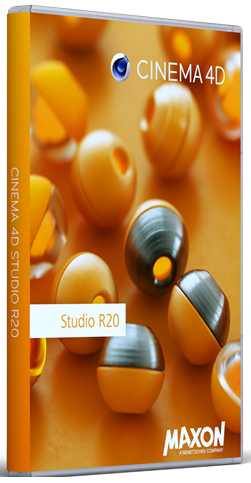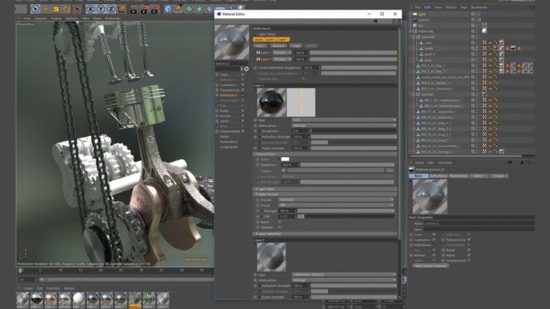Maxon kicks off a new era with a new version of its flagship.
 Maxon introduced Cinema 4D release 20 at Siggraph, 2018 this year and rolled out the new software weeks later. They’ve got that stable cadence down, as befits a German company, though the company has a strong North American presence as well since the US is Cinema 4D’s largest user base. Maxon is a 3D modeling and animation tool with a strong presence in the VFX industry and for motion graphics artists.
Maxon introduced Cinema 4D release 20 at Siggraph, 2018 this year and rolled out the new software weeks later. They’ve got that stable cadence down, as befits a German company, though the company has a strong North American presence as well since the US is Cinema 4D’s largest user base. Maxon is a 3D modeling and animation tool with a strong presence in the VFX industry and for motion graphics artists.
The company has added on to its capabilities with an expansion of its Motion Graphics toolset, MoGraph, as well as new volume-based modeling tools, simplified CAD files import and a node-based material system.
The new features include:
MoGraph Fields—MoGraph is Maxon’s procedural tool to create motion graphics. With version 20, Maxon has introduced the Fields, which makes it possible to efficiently control the strength of the effect using any combination of falloffs—from simple geometric shapes to shaders and sounds to objects and mathematical formulas. Fields are not limited to the MoGraph feature. They can be mixed and combined with one another in a layer list. Effects can be re-mapped and grouped in multiple Fields to control Effectors, Deformers, weights and more.
Volume-based modeling—The OpenVBD-based Volume Builder and Mesher in Cinema 4D R20 offer an entirely new procedural modeling workflow. Any primitive or polygon object (including the new Fields objects) can be combined to create complex objects using Boolean operations. Volumes created in R20 can be exported sequentially in OpenVBD format and can be used in any application or render engine that supports OpenVBD. And here, is good a place as any to add that OpenVBD, is an open-source C++ library, part of the growing portfolio of open source tools that the VFX community is building for itself. Dreamworks maintains OpenVBD and it’s supported by many major software companies. Houdini, Pixar Renderman, Arnold SolidAngle, NextLimit Realflow, Clarisse, Guerilla Render, Maxwell Render, Foundry Modo V-Ray, OctaneRender, and 3Delight are listed on the OpenVBD site.
Node-based material system—More than 150 different node-based shaders offer customers a new and streamlined workflow to quickly and conveniently create shading effects from simple reference materials to highly complex shaders. The existing standard material system’s interface can be used to get started with the new node-based workflow. Node-based materials can be made available as parametric assets with a reduced interface. Node-based material systems are an expected feature in modern modeling and animation tools since SoftImage introduced them 15 years ago. Maxon is among the last to add the feature. Users are delighted.

CAD import—Cinema 4D R20 offers seamless drag and drop import for common CAD file formats such as Solidworks, STEP, Catia, JT, and IGES. The new feature eliminates the need to use intermediate tools to import CAD models. The importer converts NURBS to polygons and the scale-based tessellation feature of the import function enables control of the level of detail.
ProRender improvements—The GPU-based ProRender in Cinema 4D is a GPU powered ray tracing renderer that can create physically accurate renders. In R20, key features such as Subsurface Scattering, motion blur, and multi-passes are now available. Other enhancements in ProRender include updated code, support for Apple’s Metal2 graphics technology and the use of out-of-core textures.
Core modernization—Maxon updated the geometry engine for Cinema 4D with the last release of the program in 2017, which would be number 19 if you’re counting. With 20, Maxon has continued work on this upgrade with UI improvements. This is marked by a series of significant API adaptations, the new node system, and the modeling and UI framework.





